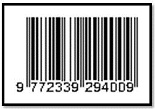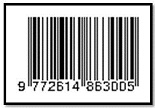The Correlation Between TOEFL Reading Score and Critical Reading Comprehension of EFL Students
Abstract
Keywords
Full Text:
PDFReferences
S. Papageorgiou, S. Wu, C. N. Hsieh, R. J. Tannenbaum, and M. Cheng, “Mapping the TOEFL iBT® test scores to China’s standards of English language ability: implications for score interpretation and use,” ETS Res. Rep. Ser., vol. 2019, no. 1, pp. 1–49, Dec. 2019, doi: 10.1002/ets2.12281.
D. Phillips, Longman Complete Course for the Paper-based TOEFL Test, New York: Adison Wisley Longman Inc, 2001.
A. Suherman, and L. Kertawijaya, “A TOEFL training for students of grade xii SMAN 1 Masbagik for the preparation of overseas scholarship applications.” Jurnal Pengabdian pada Masyarakat vol 7, no. 3, pp. 781-789, 2023, https://doi.org/10.32832/abdidos.v7i3.1713 [Online]. Available: http://pkm.uika-bogor.ac.id/index.php/ABDIDOS/issue/archive.
M. B. Mulumba, “Improving student teachers’ knowledge-base in language education through critical reading,” Pedagog. Cult. Soc., vol. 24, no. 4, pp. 571–586, Oct. 2016, doi: 10.1080/14681366.2016.1196233.
S. R. Jaelani, H. Wathoni, B. Purnama, H. Harianto, and S. Wadi, “The students’ ability in reading comprehension of TOEFL test for the EFL learners,” JSHP J. Sos. Hum. dan Pendidik., vol. 6, no. 1, pp. 60–66, Jan. 2022, doi: 10.32487/jshp.v6i1.1296.
R. Corrado, S. Khat, and A. Liwan, “Correlation between English proficiency and academic performances in a Cambodian University,” 2021. [Online]. Available: https://www.researchgate.net/publication/355583984
A. Pranita Devi, “The relationship between English proficiency and academic achievement of Indonesian EFL postgraduate students,” J. English Lang. Learn., vol. 7, no. 1, pp. 303–308, 2023, doi: https://doi.org/10.31949/jell.v7i1.5566.
John W. Creswell and Timothy C. Guetterman, Educational Research: Planning, Conducting, and Evaluating Quantitative and Qualitative, 6th ed, New York: Pearson Education, Inc, 2019.
T. G. Reio, “Nonexperimental research: strengths, weaknesses and issues of precision,” Eur. J. Train. Dev., vol. 40, no. 8–9, pp. 676–690, 2016, doi: 10.1108/EJTD-07-2015-0058.
D. Makwana, P. Engineer, A. Dabhi and H. Chudasama, “Sampling methods in research: a review.” Int. J. Trend Sci. Res. Dev., vol. 07, no. 03, pp. 762-768, 2023, doi: 10.47191/ijmra/v6-i8-52 [Online]. Available: https://www.researchgate.net/publication/371985656.
D. Indarti, “Analyzing critical thinking skills in reading comprehension section of TOEFL book” unpublished.
S. E. Kemp, J. Hort, and T. Hollowood, Descriptive Analysis in Sensory Evaluation, 1st ed, West Sussex: John Wiley and Sons Ltd, 2018.
A. Ghanad, “An Overview of Quantitative Research Methods,” Int. J. Multidiscip. Res. Anal., vol. 06, no. 08, Aug. 2023, doi: 10.47191/ijmra/v6-i8-52.
F. Hilal Yagin, B. Yagin, and A. Pinar, “Normality distributions commonly used in sport and health sciences,” J. Exerc. Sci. Phys. Act. Rev., vol. 2, no. 1, pp. 124-131, 2024, doi: 10.5281/zenodo.11544808.
Z. Hanusz, J. Tarasinska, and W. Zielinski, “Shapiro-wilk test with known mean,” Statistic Journal, vol. 14, no. 1, pp. 89-100, Feb, 2016.
A. Ghasemi and S. Zahediasl, “Normality tests for statistical analysis: A guide for non-statisticians,” Int. J. Endocrinol. Metab., vol. 10, no. 2, pp. 486–489, 2012, doi: 10.5812/ijem.3505.
L. Cohen, L. Manion and K. Morrison, Research Methods in Education, 8th ed, New York: Routledge, 2018.
B. A. Nadea B, Jumariati, and Nasrullah “Bottom-up or top-down reading strategies: reading strategies used by EFL students,” Adv. Soc. Sci. Edu. Humanit. Res., vol. 587, pp. 30-36, 2021, https://doi.org/10.2991/assehr.k.211021.005.
R. Smith, P. Snow, T. Serry, and L. Hammond, “The Role of Background Knowledge in Reading Comprehension: A Critical Review,” Read. Psychol., vol. 42, no. 3, pp. 214–240, 2021, doi: 10.1080/02702711.2021.1888348.
F. B. Alfiatunnur and C. A. Kamil, “Strategies in dealing with the reading section of TOEFL prediction’: a case of Aceh EFL learners,” IJEE (Indonesian J. English Educ., vol. 7, no. 2, pp. 159-171, 2020, doi: 10.15408/ijee.v7i1.17622.
DOI: https://doi.org/10.31764/leltj.v13i1.31500
Refbacks
- There are currently no refbacks.
Copyright (c) 2025 Resti Anggriyani

This work is licensed under a Creative Commons Attribution-ShareAlike 4.0 International License.
_____________________________________________________
Linguistics and ELT Journal
p-ISSN 2339-2940 | e-ISSN 2614-8633

LELTJ is licensed under a Creative Commons Attribution-ShareAlike 4.0 International License.
_____________________________________________________
LELTJ is abstracting & indexing in the following databases:
_____________________________________________________
LELTJ Editorial Office:













